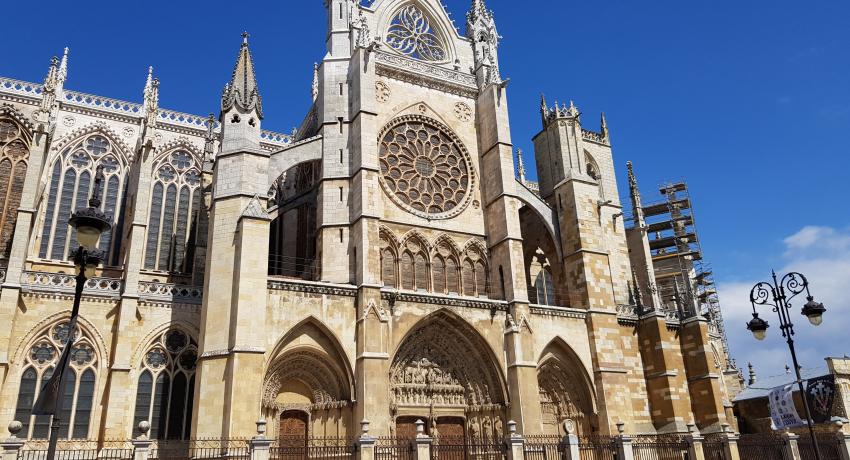The cathedral was built in the 13th century in the Gothic style following French influencers that reached the city on El Camino. The cloisters are covered with frescoes and adorned with statues of saints and prophets. The vaults are impressive as they are sculpted all the way around with both Christian and pagan themes.
Built by Gaudi in the late 19th century to be the headquarters of a textile company, today it houses the offices of a local bank. In front, a sculpture of the architect sitting on a bench.
Places to visit
Our first step to engaging ourselves in the culture and tradition of Spain, is a stop at the historical city of Leon. Founded in the first century BC, the history of Leon is rich and deep; with its Roman origins, to the Muslim occupation with a stunning 13th century Gothic masterpiece, the Cathedral of Leon. We start our visit being immersed in the wall to wall of stained glass, giving the usually dark Gothic style an enchanting interior reflecting and refracting the different colors of the windows. We will also have the opportunity to visit the Holy Grail, the cup Jesus drank from during the last supper. Could this be the actual Holy Grail? Spanish university professors believe so.
With its long history and affluent monasteries, Leon is famous for gastronomy. Try typical dishes such as morcilla sausage, cecina meat, and typical soups and stews of the region. Leon is also famous for its hand baked breads, with pastry shops and small cafes lining the streets in the old district. Visiting these will provide a wonderful taste and feeling of the long traditions and customs of the Spanish culture.
After a day of exploring, travel back in time by visiting a renovated monastery. You can actually choose to spend the night there, where history and luxury converge in a modernized 16th century cloister turned hotel.



